I returned to Islamabad recently, after a long absence, and was able to look at the city, once again, with a tourist’s eye. Before I get used to it and start taking everything as given, I thought, I should put down my impressions about the city: the good, the bad and the ugly.
First, the good. (The bad and the ugly will come in subsequent posts).
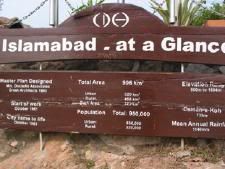

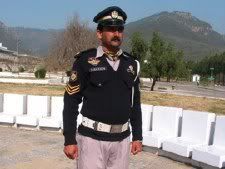
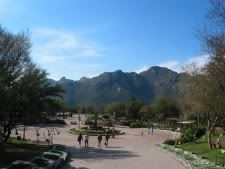
For those not familiar with Islamabad, when the city was built, in the early 60s, its various localities, or sectors as they are called, were given meaningful and interesting names like Mehran, Shalimar, Ramna etc., each name from a different province of Pakistan. For some inexplicable reasons, these names went out of use and were replaced by impersonal, and rather bureaucratic, names like E, F, G, H and I, which are further divided into 1, 2, 3 and so on. That is why you hear of E -7, F-6, F-7 or G-6, G7, G8, etc. I think it was Khalid Hasan who once said that the addresses in Islamabad sounded like computer commands. How true!
E and F sectors are closest to the Margalla hills and therefore considered more “prestigious†while I sector is farthest from the hills and closer to Rawalpindi. There is a running joke in Islamabad according to which E sector is for the Elite, F is for First class citizens, G for General public, and I for Idiots who think they live in Islamabad but, in fact, they live in Rawalpindi. Obviously, it is one of those classist jokes that are found in most cities all over the world.
I have also heard the comment that Islamabad is a city without soul (whatever that means). Also, that it does not have history, architecture, and culture like Lahore and does not have the quick pulse and energy like Karachi. Probably all this is true. But Islamabad has something that more than makes up for all such deficiencies. It has geography! Geography that is difficult to match by any other city of Pakistan or, for that matter, by most capitals of the world.
By geography I don’t mean elevation above the sea level, which in Islamabad’s case, incidentally, is a healthy 1700 feet. Nor am I talking of its latitude, which is 330 something – same as Atlanta, Georgia or Long Beach, California. It is Islamabad’s proximity to the Margalla hills that makes it a unique and a beautiful city. The city is so close to the hills that, on clear days, it seems as if you could touch them. They provide such a spectacular backdrop! Not only that, the hills also provide the numerous wooded trails for trekking and picnic spots. Plus, and this is a big plus, because of the hills, its elevation and latitude, the city has a cool, crisp and comfortable climate for 6 months of the year, and guaranteed clear blue skies for 5 days a week – on average, that is.
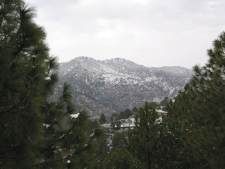
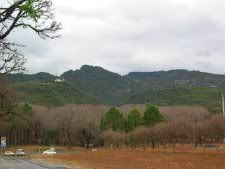
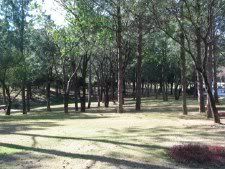
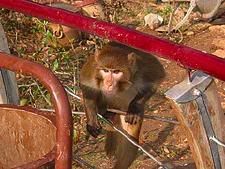
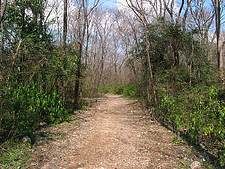
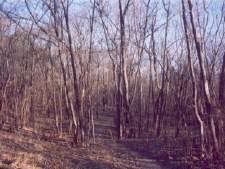
And, as if for embellishment, the Margalla hills occasionally wear a light coat of snow, some say every 7 years. The last time it snowed on the hills was in 2004. It looked spectacular and lasted long enough for me to drive to Pir Sohawa (25 minutes) and take a few pictures. And yes, unlike Karachi or Lahore, the city never gets swamped after rain even though it rains pretty heavily at times (45 inches annually).
The hills are also a haunt for wildlife. It’s not uncommon to see monkeys coming out of the woods in the morning, crossing the Hillside Street in sector E-7, and sometime even jumping over the boundary walls of the houses in search of food. At night wild boars and jackals freely roam the wooded areas of the city scavenging for food. It makes Islamabad one of the few capitals of the world, if not the only one, where humans and wildlife coexist peacefully.
By Pakistani standards, Islamabad has excellent infrastructure – good roads, dependable electricity and telephone service. Above all, it is green, clean and free of the chaos seen in many of the Pakistani cities.
Talking of chaos, Islamabad has got itself new traffic police, which looks good – and is good. Unlike its sleazy and sloppy predecessors, the new police are serious, professional and polite. And they seem to manage the traffic pretty well. (I hope it stays that way).
Islamabad does not have shopping malls or large department stores — (yet!). It has interesting markets or bazaars in each sector, which resemble more like the old Middle Eastern souks. They are convenient and can be fun to visit, particularly in winters in the evening. The young Afghan boys frying potato chips (French fries), roasting peanuts or popcorns or preparing tikka kebabs in their tiny stalls or selling beads and trinkets on pushcarts in front of IT stores and video shops present a delightful mixture of old and new. The bookstores sell an amazing variety of books, ranging from Barack Obama’s new book The Audacity of Hope to Reading Lolita in Tehran to Behishti Zewar by Maulana Ashraf Thanvi.
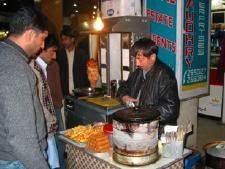
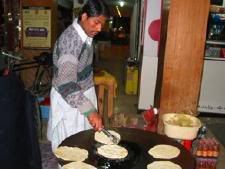
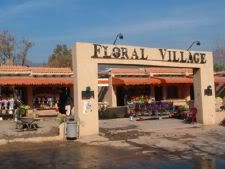

The purpose-built flower markets in sectors F-6 and F-7 are not only convenient but delightful places to visit. And they are not expensive. A stem of gladiolas costs only 10-12 rupees as opposed to 2 to 3 dollars in New York. But if you betray an “Amreeka-palutt†demeanor you might have to pay more.
One of the greatest pleasures of living in Islamabad, that is, if you love outdoors and nature, is being able to go trekking in the Margallas. There are numerous trails leading to different peaks. Walking through the woods, especially in spring or early summer, and listening to the silence of the forest, broken only by bird sounds or an occasional rustle in the bushes caused by a surprised fox, can be an intoxicating experience. Wild fragrance of acacia, pine trees and sanatha shrubs pervades the air. I tell my friends that you could get a “high†on forest fragrance. Some jokingly suggest that the “high†I am talking about probably comes from the marijuana that grows wild and in abundance in the woods of Islamabad.
There is even a purpose-built and dedicated biking track going through a wooded area. But I have not seen many people biking on it. I guess there are certain things “self-respecting†Pakistanis won’t do. Biking is one of them. (Carrying anything heavier or larger than a briefcase is another.) It’s a cultural thing, I guess.
Another fun place to visit is Daman-e-Koh, a picnic spot at a height of 2,400 feet above sea level, but only 10 to 15 minutes drive from the city. Daman-e-Koh was always there with its white dome visible from everywhere in the city. The dome belonged to, and still does, a restaurant that served indifferent food. But recently the place has been transformed, thanks to the Capital Development Authority (CDA), into a delightful picnic spot, with a nicely landscaped park furnished with plenty of benches, paved paths, and decent and fairly clean public toilets (something uncommon in Pakistan) and a generous car park.
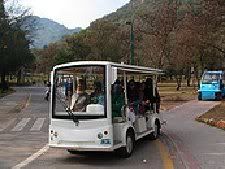
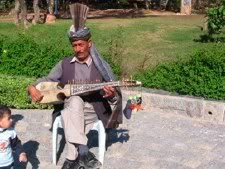
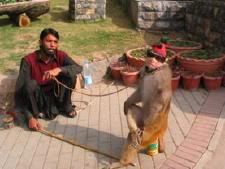
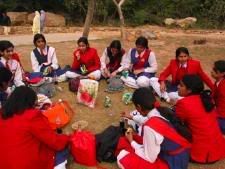

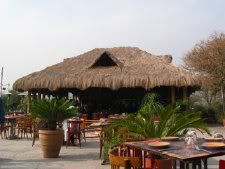
For amusement, you have golf carts that take picnickers for a short ride around the park. You also have the usual Bandar walla, his monkey in a cap greeting the visitors. Also, there is (this is unusual) a Pathan musician in his flamboyant kulla serenading the visitors with his rubab (a string instrument). People seemed to be more attracted by his presence than by his music.
Instead of one restaurant, Daman-e-Koh now has three: an upscale restaurant named Café Lazeez, the old domed restaurant now improved and moderately priced, and a fast-food restaurant. Cafe Lazeez is built as a thatched hut with a large open terrace that has a fabulous view of Islamabad, the Rawal Lake and the surrounding mountains. Eating here, at this height, is somewhat like eating in the restaurant on Eiffel tower, in Paris. The difference is that tikkas and sheesh kebabs (reshmi kebabs, as they call them) at Cafe Lazeez are out of this world. Not being a great meat eater myself, I ordered the only two vegetarian dishes on the menu that day: paneer palik and masoor ki daal, served with fresh rotis from a tandoor. I cannot wait to go back there again. The bill for two persons? Rupees 600 including tips! Only US 10 dollars! The lack of a glass of wine that you would get on Eiffel Tower is made up by the incomparable desi food and, as I said before, the forest fragrance!
Note: The bad and the ugly will come later in a separate post. All photographs are by the author.


















































Islamabad is a nice city, but we sometimes forget that for much of the rest of the country it is so very different from where they live that visiting it is like visiting a foreign country. It causes therefore as much resentment as admiration. I am surprised that people are surprised that there will also be the bad and the ugly side to Islamabad. I can think of many but will wait for the next installment of this.
I still love my experience of living in Islamabad for almost five years. Though I have been visiting this town since the days of my school life. My romance for Islamabad was much more than for Lahore and Karachi.
During those five years I had wonderful time there. I love the evenings of Islamabad by going to trail trek or F 9 park and then sitting in Civil Junction at night with friends. Visit to Mr. Books and old book shops in Jinnah Super and eating role paratha in gole market. Going to aab para late at night in summer to drink soda. The zig zag road from jasmine garden to shakar parian (my favourite road). Lok virsa mela and museum. These all are the uforgettable memories during my stay there.
My last visit in December 06, disillusioned me and I will dicuss it in upcoming (the bad, the ugly) part.
@MQ
Thanks for writing such a nice article !
It helped me to refresh those memories.
I have many wonderful memories with Islamabad…yes it is close to the hills and the mountains, the nights are quiet and peaceful, everyobody knows everyone else…however, the last time i went there what really shocked me was the amount of vehicle traffic on the roads…i remember as a kid when we use to go to Jinnah there was hardly a car to be seen…and now…!!!! Thank God though our traffic police has undergone a lot of major changes and you do see improvement but the traffic is still too much!!!
I dont know where to start.I have witnessed its growth over the decades. From a purely “Baboo Town” it has been assuming a personality of its own. Like a migratory bird I spend the winters here and enjoy its many wonderful pleasures. Have stayed on business travel when the present Foreign office Bldg. was called Pakistan House Hotel, subsequently named Hotel Sheherzaad. Aab Para was the only place with some small time shops and close by was the only Petrol station walking distance from the MELODY Tikka Kabab shop (Still there).
Today its population is said to have exceeded a million- and counting. Eids and other major holidays would witness a mass exodus and the city would become a ghost town and a haven for the Robbers. Everyone at Eids would go back to their hometowns as no one living in Islamabad could call it home. The big transformation in this respect is that it now has a permanent population and at Eids or other long holidays NOW the children come and visit you.
Some interesting features and observations that I wish to share:
(1)I believe Islamabad must have the highest level/percentage of Literacy and education of any city in Pakistan. In order to be a Daftri or Office boy in the government offices you have to be a matriculate and possibly that should be the case in the private sector. The domestic help would indeed bring down those percentages.
(2) By the desing of its master plan each “One square MILE” Sector has its own local schools and Colleges. That must contribute to the higher education/literacy rates.
(3)The Master Plan also provides 5 Mosques for each “one square MILE” Sector and since that number is not sufficient, the highly religious people living in Islamabad have constructed some 80 additional mosques on encroached government land.
(4) At the few elections that I have observed, I witnessed polling stations empty of people/voters compared to other cities, for example the neighbouring Rawalpindi city.
COULD THERE BE SOME CORELATION BETWEEN EDUCATION LEVEL AND PARTICIPATION IN THE CIVIC/DEMOCRATIC PROCESS???????
I have heard a number of Government officials declaring that they are “Not Supposed” to vote as they are “Impartial” in this process. I have tried to find where does it say and have failed to verify. I personally think they donot wish to be waiting in line to vote among all those “you know who” the Awam. Then why don’t the educated amongst us crying Hoarse for Democracy show up and perform the first step/duty i.e.TO VOTE????????
(5) The cost of living is perhaps the highest among all the major cities of Pakistan. This is Ironic when we know that the major part of its population is made up from the “lowly paid” government servants. Just watch the Daily Geo TV programme about the market prices of fruits and vegetables etc., for 5-6 major cities and you will be astonished to know that Karachi(being the farthest from where they are grown)IS THE CHEAPEST (and offers better quality produce)while Islamabad IS THE MOST EXPENSIVE (Right in the heartland of production)ALONGWITH Quetta!!!!!!!!
More on this, maybe, sometime later.
Thanks for a great account on our great capital city Mast Qalandar. I had the good fortune of living in Islamabad back in the mid 80s for a few years, and I must say at that time Islamabad had only good and great to offer, so I will be really looking forward to your posts regarding the bad and ugly about Islamabad. I still remember back in those days this burger joint “The Black Beards!!” (i’m sure this name has been deemed politically incorrect now) and Yummy 36 ice cream parlor in Jinnah Super Market were the favorite hangout spots for the youngsters for their late night (9pm!!)shenanigans, I hope they are still there. I also once witnessed an Islamabad traffic cop ticketing a Pajero with an “MNA” tag for a violation. I bet that sight is rare these days, as it was in any other city back then. Thanks again for your post.